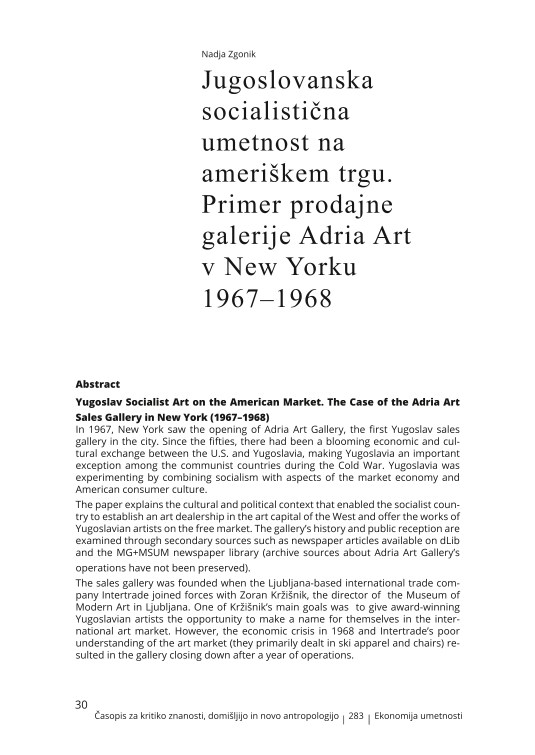In 1967, New York saw the opening of Adria Art Gallery, the first Yugoslav sales gallery in the city. Since the fifties, there had been a blooming economic and cultural exchange between the U.S. and Yugoslavia, making Yugoslavia an important exception among the communist countries during the Cold War. Yugoslavia was experimenting by combining socialism with aspects of the market economy and American consumer culture.
The paper explains the cultural and political context that enabled the socialist country to establish an art dealership in the art capital of the West and offer the works of Yugoslavian artists on the free market. The gallery’s history and public reception are examined through secondary sources such as newspaper articles available on dLib and the MG+MSUM newspaper library (archive sources about Adria Art Gallery’s
operations have not been preserved).
The sales gallery was founded when the Ljubljana-based international trade company Intertrade joined forces with Zoran Kržišnik, the director of the Museum of Modern Art in Ljubljana. One of Kržišnik’s main goals was to give award-winning Yugoslavian artists the opportunity to make a name for themselves in the international art market. However, the economic crisis in 1968 and Intertrade’s poor understanding of the art market (they primarily dealt in ski apparel and chairs) resulted in the gallery closing down after a year of operations.




